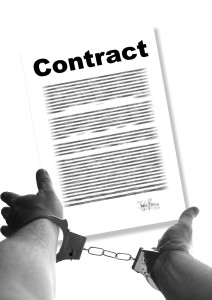 On 22 November 2016, the Court of Appeal of Amsterdam decided the case Pearson v. Bär Software (the judgment is only available in Dutch). The judgment seems remarkable in light of the CJEU’s earlier ruling in the Ryanair case. How do they compare?
On 22 November 2016, the Court of Appeal of Amsterdam decided the case Pearson v. Bär Software (the judgment is only available in Dutch). The judgment seems remarkable in light of the CJEU’s earlier ruling in the Ryanair case. How do they compare?
The Pearson case
The Pearson v. Bär Software case considered a collection of data concerning psychological tests, created by Pearson. These databases were used, for instance, for diagnostic purposes and medical advice. Bär Software extracted data from 172 psychological tests for their own scoring program. 51 of these tests originated from Pearson, who had not given Bär Software permission to use the data. At first instance, the court ruled that Pearson’s databases were not protected by copyright (Article 3 Database Directive), as they lacked a personal influence and no creative choices had been made. Nor were they protected by the sui generis database right (Article 7), as no substantial investment had been made.
At second instance, the Court of Appeal took the same approach, stating that the databases merely displayed objective results and factual information and therefore lacked the originality that is needed for copyright protection. As regards the sui generis database right, the District Court ruled that Pearson only showed that it had made substantial investments in the creation of the data as such, not in the disclosure of those data in a database (see the CJEU case British Horseracing Board).
Contractual clauses
The most interesting part of the judgment concerned a paragraph in the users’ manual, which the users of Pearson’s databases received. The manual contained a passage which prohibited the copying or duplication of any part of the databases without Pearson’s permission. The approach that the Court of Appeal takes towards this passage is interesting in light of the 2015 Ryanair judgment from the Court of Justice.
Articles 6(1) and 8 of the Database Directive give users of a database several rights that cannot be restricted by contract. According to article 15, ‘any contractual provision contrary to Articles 6(1) and 8 shall be null and void.’ However, in the Ryanair case, the CJEU ruled that the Directive does not apply to databases that are not protected by copyright or the sui generis right. In such a case, the owner of a database can limit the rights of users without taking the aforementioned articles into account.
Bearing this judgment in mind, one could expect that the Court of Appeal would have considered Pearson’s paragraph on use of the databases valid: the databases are not protected, so Pearson is not bound by the provisions of the Directive and can restrict the rights of the database user. However, this is not the approach that the Court of Appeal takes. It says that the reader of the paragraph would understand it as referring to copyright protection: he would think that the paragraph simply states that the copyright on the database should be respected. Now that there is no copyright on the databases (and therefore no copyright infringement), the user of the databases cannot be held liable on the basis of this passage.
The Court adds that it does not matter for the outcome of the case whether the passage in the users’ manual actually is a part of the contract. The passage does not protect the database owner either way.
What to make of this?
The Ryanair judgment leaves the owner of an unprotected database a large margin of uncertainty in restricting users’ rights: whether a provision is allowed is a matter of national contract law. The Court of Appeal adds to this by indicating that certain provisions can only be understood as referring to copyright. Therefore, they are not valid where the database is not protected by copyright. The court thereby narrows the margin for the database owner.
By doing so, the judgment raises a number of questions. To me, it seems that the reason to include such a paragraph in a contract would be to ensure protection of the database even without copyright or the sui generis right. Why would one think that a contractual clause – that a user has to agree to – refers to the copyright system that works without consent of the user? Following this line of thought: does the place of the paragraph matter? I would argue that the answer to this question should be yes. Such a passage could more easily be understood as a reference to the copyright regime if it is included in the users’ manual than if the paragraph is written down in the actual contractual agreement that the user signs. And lastly: what if Pearson adjusts the paragraph by adding that copying or duplicating the data is prohibited even if the database is unprotected by copyright or a sui generis database right? Would this simply solve the entire problem? The judgment of the court seems to leave Pearson this space. And after all, that would make this judgment seem less strange in comparison to the Ryanair judgment. The rule then could be: Provided the owner of an unprotected database does not give the impression that he has a copyright or sui generis database right, he enjoys the contractual freedom that he is entitled to following the Ryanair case. If this case were to make it to the CJEU, I would consider this a workable outcome.
Hopefully, future case law will give us answers to these questions. Because for now, the matter seems to have only become blurrier.
________________________
To make sure you do not miss out on regular updates from the Kluwer Copyright Blog, please subscribe here.


